BD Genomics stereoscopic art exhibit — AGBT 2017
Art is science in love.
— E.F. Weisslitz

contents
In genomics, insights can hinge on a difference of one. One cellular mutation to go from healthy to diseased. One cell migration from tumor to metastasis. Even subtle differences in gene expression between healthy cells shapes their form and function.
In Data in New Dimensions, we’ve created an immersive data art experience celebrating the individuality and often underestimated influence of the single cell—captured by high-throughput single cell analysis.
Using the rich data from the very tools and instruments in this room, we’ve transformed data points back into cells and, informed by their differences, allowed those cells to once again rejoin the world of the viewer in the third dimension.
How do these canvases make you think about the difference of one in your work?
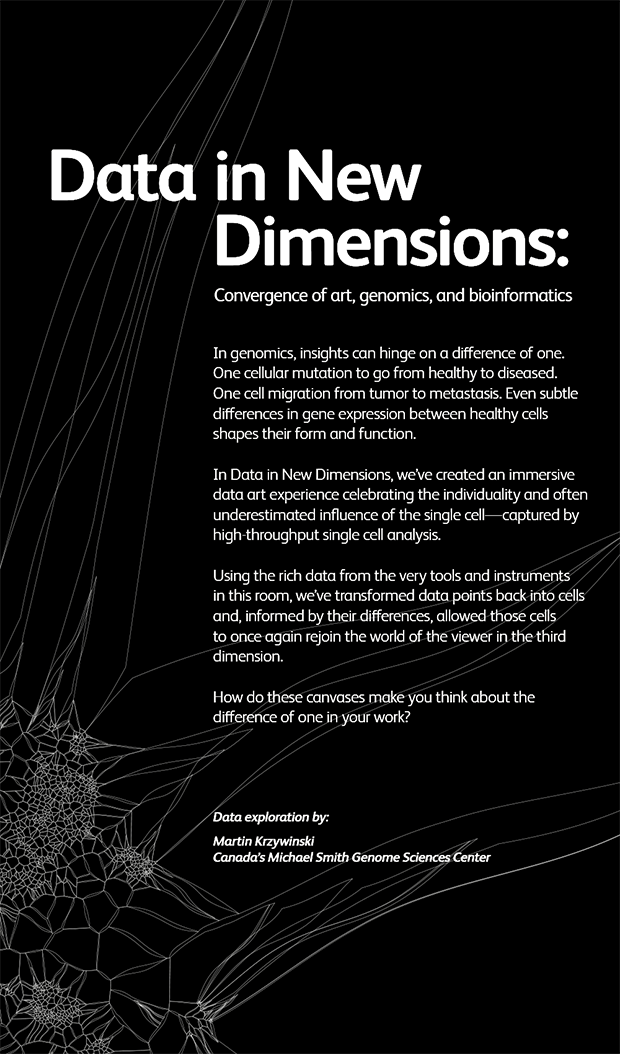
This piece contrasts two different blood cell states, diseased versus healthy, in such a way that the differences manifest as depth. Cells on the base plane (the closest to the wall) represent healthy control cells, while diseased cells ascend increasingly closer to the viewer based on how different they are from their healthy counterpart.
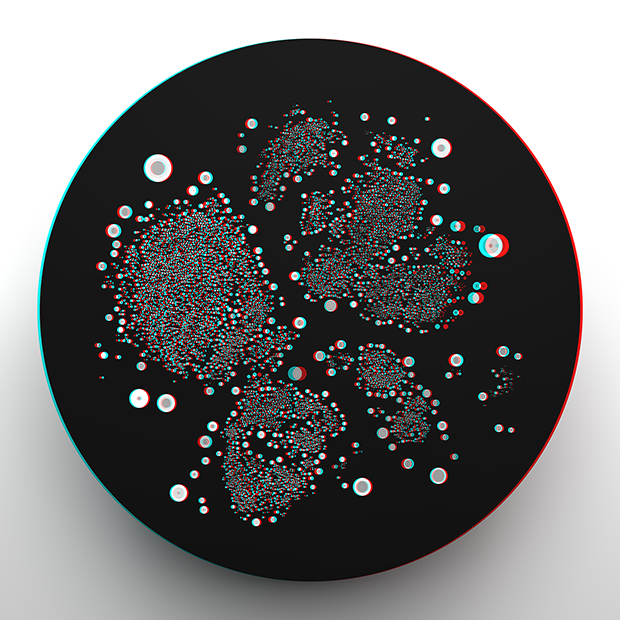
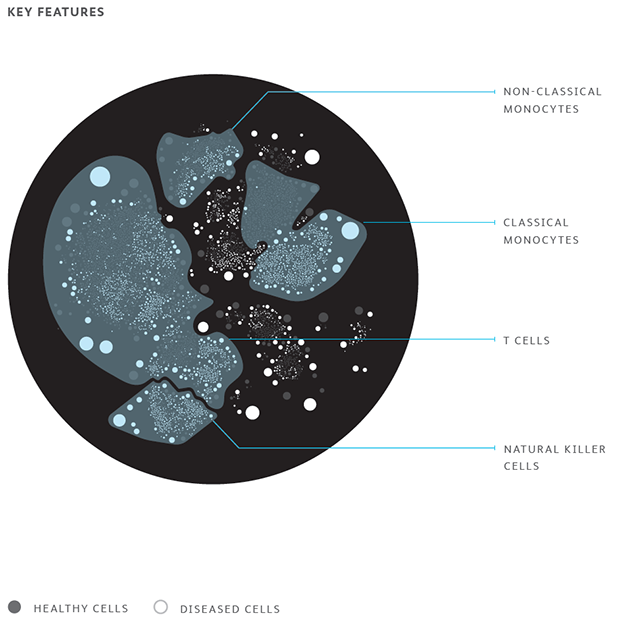
This piece paints a picture of the diversity of disease, showing how the cells of a tumor and its metastasis vary in expression patterns. These differences are manifested in the piece through each cell’s position in the third dimension. Cells from the primary tumor exist on the base layer (closest to the wall). Cells from the metastatic site project into the room based on the degree of difference from the nearest primary tumor cell in their cluster.
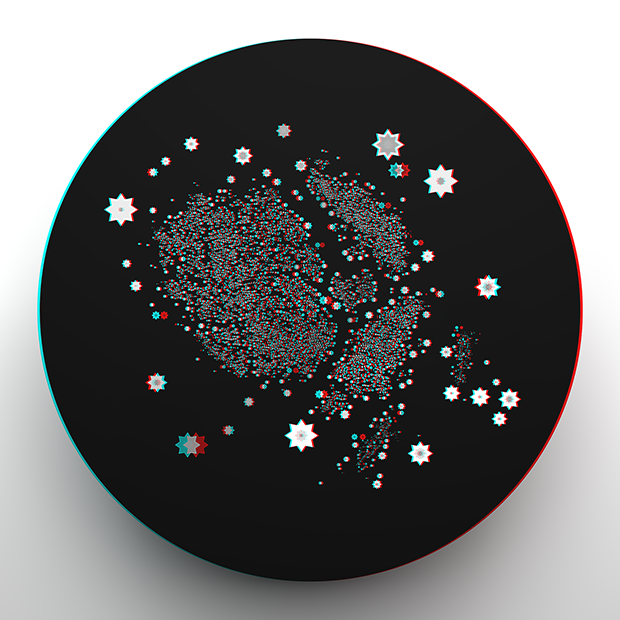
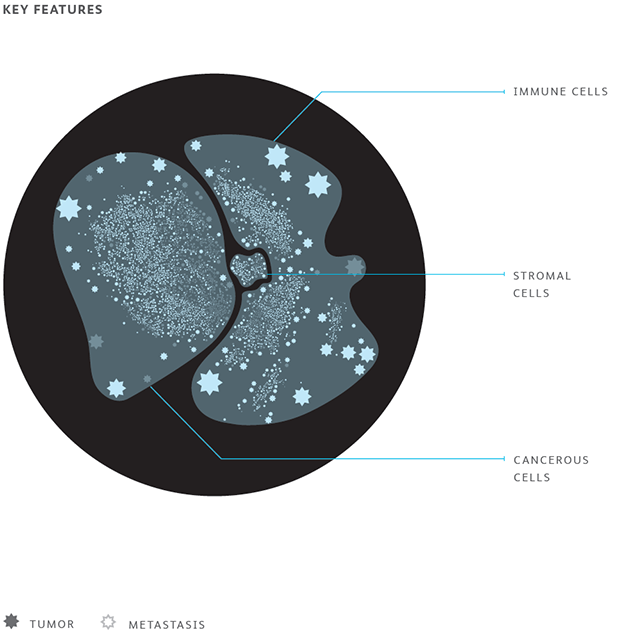
This piece explores the expression differences that help determine a healthy cell’s role within an organism. Each cluster corresponds to a different cell type along the renal tubule, with that cluster’s depth mapping to its position along the tubule. Blood enters the tubule through the cells on the base layer (closest to the wall) and is filtered by the cells in the successively ascending layers. The remaining waste exits past the cells in the layer nearest to the viewer.
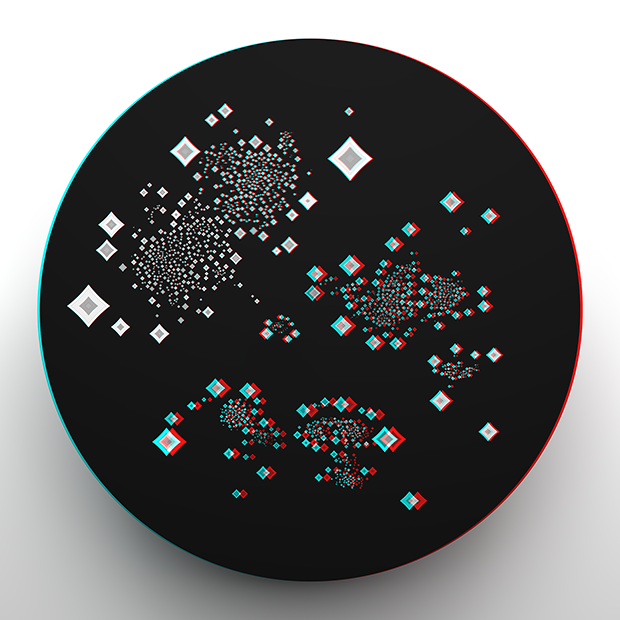
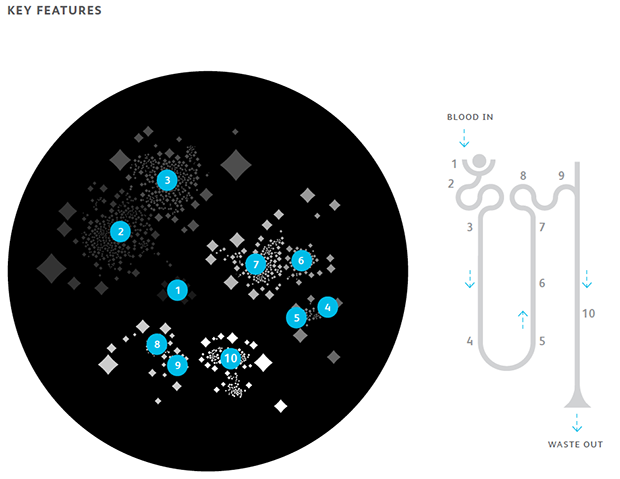
Beyond Belief Campaign BRCA Art
Fuelled by philanthropy, findings into the workings of BRCA1 and BRCA2 genes have led to groundbreaking research and lifesaving innovations to care for families facing cancer.
This set of 100 one-of-a-kind prints explore the structure of these genes. Each artwork is unique — if you put them all together, you get the full sequence of the BRCA1 and BRCA2 proteins.
Propensity score weighting
The needs of the many outweigh the needs of the few. —Mr. Spock (Star Trek II)
This month, we explore a related and powerful technique to address bias: propensity score weighting (PSW), which applies weights to each subject instead of matching (or discarding) them.
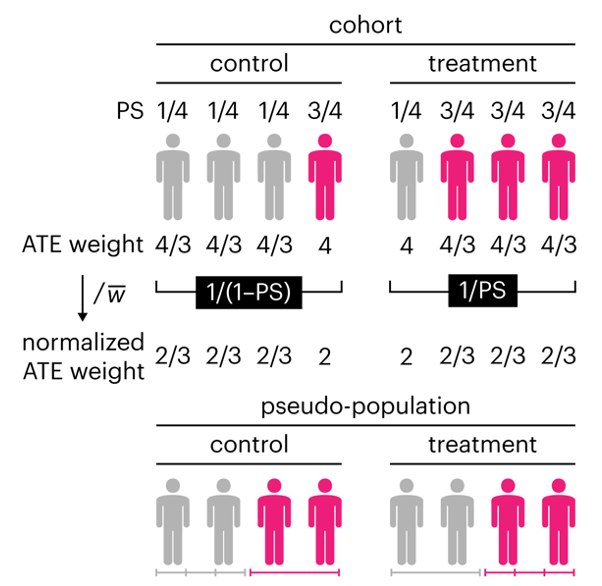
Kurz, C.F., Krzywinski, M. & Altman, N. (2025) Points of significance: Propensity score weighting. Nat. Methods 22:1–3.
Happy 2025 π Day—
TTCAGT: a sequence of digits
Celebrate π Day (March 14th) and sequence digits like its 1999. Let's call some peaks.
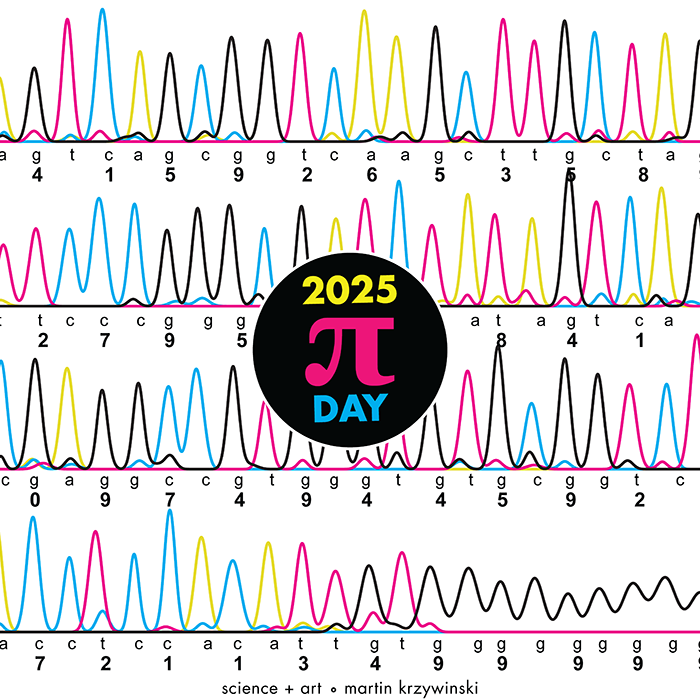
Crafting 10 Years of Statistics Explanations: Points of Significance
I don’t have good luck in the match points. —Rafael Nadal, Spanish tennis player
Points of Significance is an ongoing series of short articles about statistics in Nature Methods that started in 2013. Its aim is to provide clear explanations of essential concepts in statistics for a nonspecialist audience. The articles favor heuristic explanations and make extensive use of simulated examples and graphical explanations, while maintaining mathematical rigor.
Topics range from basic, but often misunderstood, such as uncertainty and P-values, to relatively advanced, but often neglected, such as the error-in-variables problem and the curse of dimensionality. More recent articles have focused on timely topics such as modeling of epidemics, machine learning, and neural networks.
In this article, we discuss the evolution of topics and details behind some of the story arcs, our approach to crafting statistical explanations and narratives, and our use of figures and numerical simulations as props for building understanding.
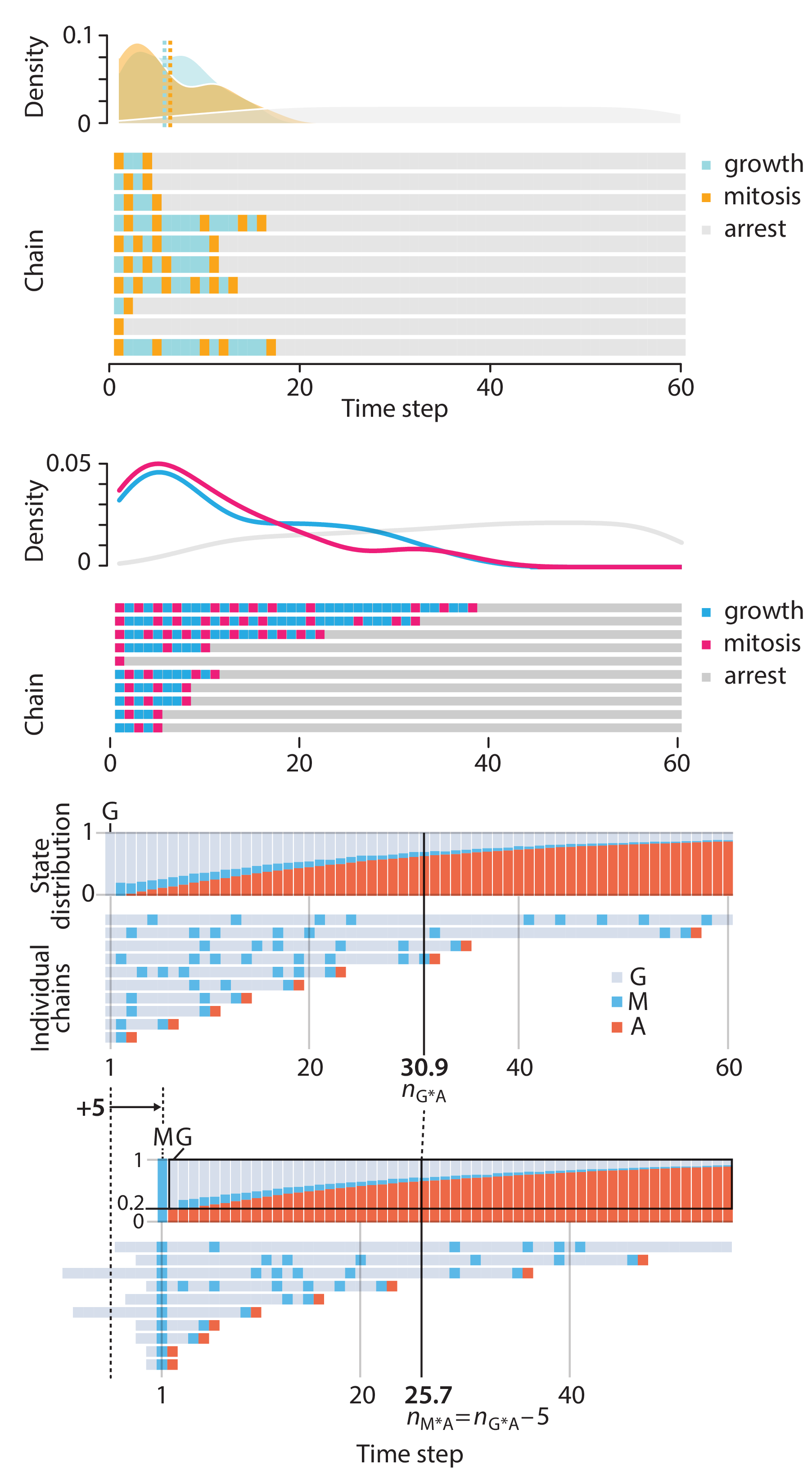
Altman, N. & Krzywinski, M. (2025) Crafting 10 Years of Statistics Explanations: Points of Significance. Annual Review of Statistics and Its Application 12:69–87.
Propensity score matching
I don’t have good luck in the match points. —Rafael Nadal, Spanish tennis player
In many experimental designs, we need to keep in mind the possibility of confounding variables, which may give rise to bias in the estimate of the treatment effect.
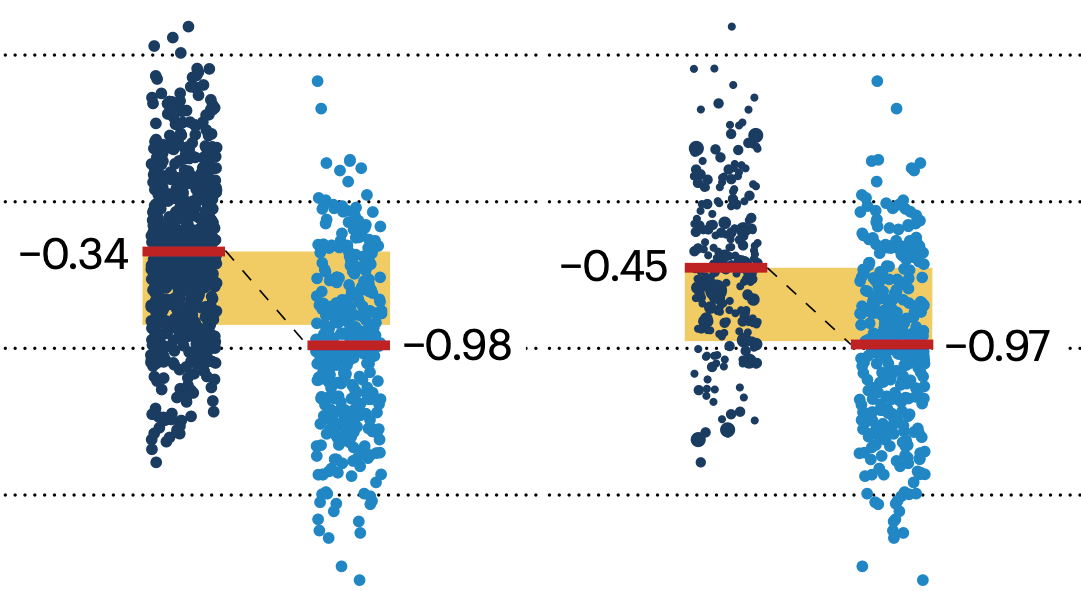
If the control and experimental groups aren't matched (or, roughly, similar enough), this bias can arise.
Sometimes this can be dealt with by randomizing, which on average can balance this effect out. When randomization is not possible, propensity score matching is an excellent strategy to match control and experimental groups.
Kurz, C.F., Krzywinski, M. & Altman, N. (2024) Points of significance: Propensity score matching. Nat. Methods 21:1770–1772.
Understanding p-values and significance
P-values combined with estimates of effect size are used to assess the importance of experimental results. However, their interpretation can be invalidated by selection bias when testing multiple hypotheses, fitting multiple models or even informally selecting results that seem interesting after observing the data.
We offer an introduction to principled uses of p-values (targeted at the non-specialist) and identify questionable practices to be avoided.
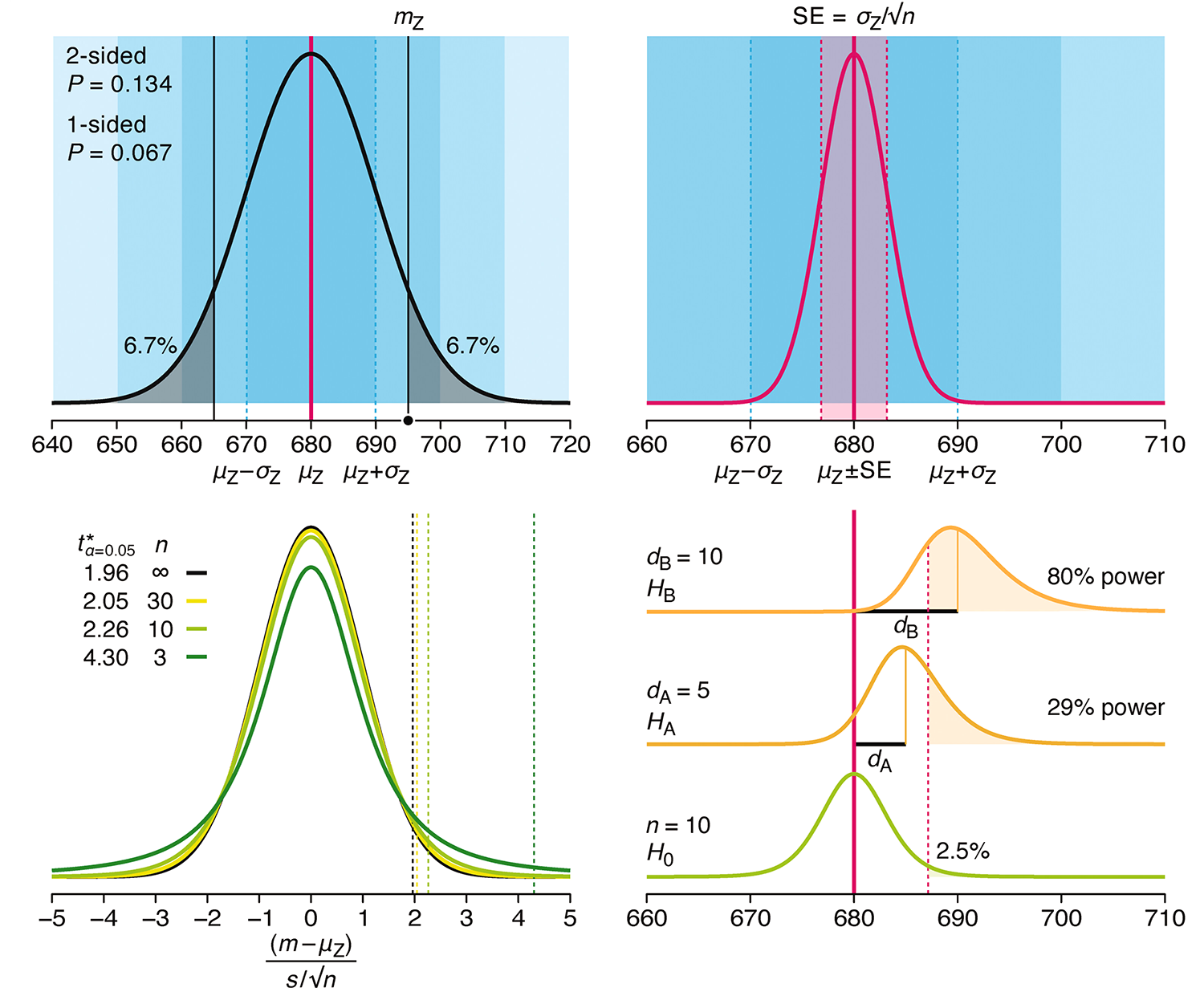
Altman, N. & Krzywinski, M. (2024) Understanding p-values and significance. Laboratory Animals 58:443–446.

